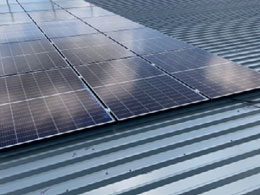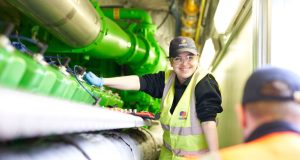As public and private sector estates seek sustainable ways to reduce carbon and operating costs, rooftop solar PV systems have become an increasingly attractive solution. Initiatives such as GB Energy funding, which encourages solar adoption in healthcare and education estates, offer a significant opportunity to install renewable energy infrastructure. Rob Wall, Technical Manager at Garland UK, outlines why assessing your roof first is essential to making that investment count.
Yet one critical factor is often overlooked: the condition and suitability of the roof itself. While PV systems are expected to perform for up to 30 years, many existing roofs were never designed with this kind of lifespan or added load in mind.
So, before committing to a solar installation, it’s worth asking if your roof is truly ready.
Why Roof Condition Matters
A solar PV system is only as reliable as the surface it sits on. If the roof below is near the end of its service life or has underlying defects, the investment in renewables can be undermined before a single kilowatt is generated.
Unaddressed roofing issues such as ponding water, membrane failures, or insufficient insulation can cause damage not only to the building fabric but to the solar array itself. Should repairs become necessary after installation, the cost and disruption of removing and reinstalling panels can quickly erode any return on investment.
The Lifecycle Mismatch
Most PV systems are designed to generate renewable energy for 25–30 years. However, many flat roofs, particularly across legacy public estates, are already 20 years old or older, often less than a decade of serviceable life before significant upgrades or replacements are required (BS 6229:2018; NHS ERIC, 2022/23).
This creates what we call a lifecycle mismatch. Without addressing roof longevity as part of the solar plan, estate teams risk facing complex remedial works, water ingress issues, or early system decommissioning just when the panels should be hitting peak performance.
Taking a Proactive Approach
The simplest way to avoid these challenges is to start every solar project with a roof condition survey. A technical roof assessment provides a clear understanding of the existing roof’s health, build-up, thermal performance, and structural capacity, ensuring that any proposed solar installation is compatible, safe, and futureproof.
At Garland UK, our team supports estate professionals by conducting site-specific roof condition surveys. These involve core sampling, on-site inspections, and technical reporting, equipping teams with the data needed to make informed, cost-effective decisions, whether proceeding with solar immediately or upgrading the roof first.
Aligning roofing works with solar installation from the outset often proves more cost-effective than separating the two. It also helps reduce disruption, especially on live sites where patient care, education, or essential services must continue without interruption.
Compliance and Compatibility
Roof design must also account for safety, compliance, and technical standards in complex environments, such as hospitals or educational campuses. For example, installations in healthcare must adhere to the NHS Premises Assurance Model (PAM) and Health Technical Memoranda (HTMs). Similar principles apply in schools and public buildings.
Key considerations include:
- Can the roof safely support the weight of solar PV arrays?
- Will the system introduce risks of standing water or leaks?
- Fire performance and safe access are particularly important when panels are above high-dependency areas or electrical plants.
- Could thermal performance upgrades also improve energy efficiency throughout the building?
When solar and roofing systems are procured separately, misalignment in design or delivery can occur, leading to duplicated work or compliance gaps. An integrated, planned approach avoids these pitfalls.
Futureproofing a Hospital Roof
In one recent hospital project, Garland UK was appointed to deliver a roofing upgrade aligned with the Trust’s Green Plan objectives. Although solar PV was not included in the initial scope, the decision was made to invest in a solar-ready specification to prepare the estate for the future. This forward-thinking approach gave the Trust the flexibility to install solar later without disturbing the newly completed roof or allocating additional capital for duplicated works.
For estates and facilities professionals navigating complex decision-making, this type of integrated planning offers long-term value and operational assurance.
A Smarter Path to Sustainability
The drive to decarbonise estates is accelerating, and rooftop solar offers a compelling opportunity. However, ensuring that the roof is ready to support that investment for the full lifecycle of the system is a step too important to overlook.
By starting with a clear assessment of your existing roof condition, facilities managers can make smarter investment decisions, reduce project risk, and set the foundation for sustainable energy performance.
Garland UK’s specialist support helps estate teams align technical roofing upgrades with wider sustainability goals, ensuring delivery is efficient, compliant, and built to last. Book a free roof condition survey to support your solar planning here.








